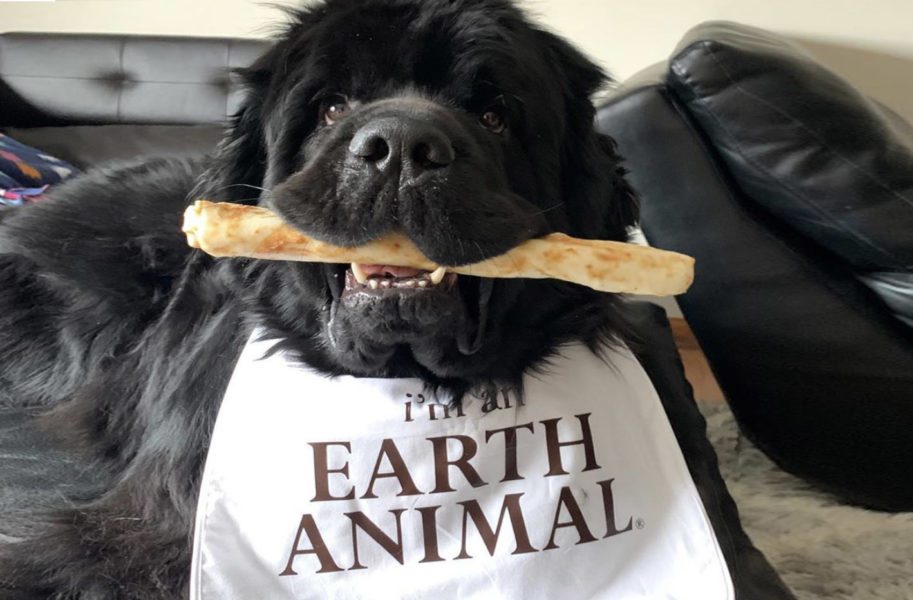Frequently Asked
Questions
No-Hide FAQ
1. What is the difference between No-Hide and Rawhide?
Both rawhide and No-Hide chews are long-lasting chews that provide dogs with psychological satisfaction. But rawhide is made from poorly digestible hides culled from cows. Those hides are treated with many strong chemicals in order to reach the stage where they can be shaped and formed into the chews you see in stores.
In contrast, No-Hide chews contain NO animal hides and chemicals are NOT used to produce them, so your animal is safe from consuming harsh chemicals. No-Hide chews are made with 100% human grade food ingredients that are nutritious, highly digestible and completely healthy for your dog.
2. How are No-Hide chews made?
No-Hides are made in a human food processing facility in the USA. Our protein flavors (beef, chicken, salmon, pork, venison and peanut butter) are all human grade and sourced in the US from humanely-raised animals. The salmon is wild-caught. Venison is free-range, grass-fed. Our ingredients – olive oil, brown rice, eggs, agar agar and the naturally-derived enzymes from banana and pineapple – are mixed together with the protein flavor. In a proprietary cooking process, the mixture is hand-rolled into its shape, hand-basted with a slurry of the protein flavor (chicken, beef, pork, venison, peanut butter or salmon) and individually air-dried to form the long lasting, tasty chew.
3. Where are No-Hides made?
No-Hides are made in the rolling farmlands of PA in a small, human food processing facility by dedicated workers who carefully blend, bake and pack them with a personal touch.
4. What is the coating on No-Hides?
The “coating” is a slurry of chicken, beef, pork, venison, peanut butter or salmon that is basted on to No-Hide for extra flavor for your dog. The slurry always matches the protein of the No-Hide.
5. How did you test the digestibility of No-Hides?
We strive for a minimum of 75% digestibility which is verified annually through 3rd party testing.
6. What is the kcals (calories) in No-Hides?
No-Hides are packaged by weight. And because they are hand-made and each individual piece varies slightly, it’s hard to provide an exact caloric count by individual piece. However, we know that many pet parents want to know the calorie count of what they are feeding. In the table below, we’ve prepared the approximate calorie count per individual No-Hides.
| Small No-Hide | Medium No-Hide | Large No-Hide | |
| Beef | 103 | 181 | 301 |
| Chicken | 99 | 173 | 288 |
| Salmon | 99 | 173 | 288 |
| Pork | 100 | 176 | 293 |
| Peanut Butter | 101 | 177 | 295 |
7. What is the sourcing of the Beef, Chicken, Salmon and Pork in The No-Hides?
The beef, chicken, pork and venison used in No-Hides are all sourced in the US from animals that are humanely- raised and free-range, grass-fed. All the protein ingredients come from animals that have been USDA inspected and approved for human consumption (aka “human grade”). The salmon used is 100% wild caught, usually from the North Atlantic seas. We never use factory-farmed animals or fish.
You might find it useful to know that when the USDA inspects meat animals, they designate those animals as either “inspected and approved for human consumption” or “inspected and condemned for human consumption but allowed to be salvaged for pet food”. There is a third category, which is “condemned to tankage”, which means it can’t be used for any type of food product. So, if you are evaluating a product that is only labeled as “USDA inspected”, you might want to ask the manufacturer to specify if it was inspected and approved for human consumption or inspected and condemned but allowed to be salvaged for pet food. There is a difference.
8. Are No-Hides patented?
A provisional patent has been filed with the US Patent Office which describes the process of making No-Hide and the safety of No-Hide as compared to rawhide chews.
9. What are the ingredients in Chicken, Beef, Salmon, Pork, Venison and Peanut Butter No-Hides?
Beef: Beef, Brown Rice Flour, Agar Agar*, Organic Eggs, Olive Oil, Banana Powder, Bromelain (Pineapple)
Chicken: Chicken, Brown Rice Flour, Agar Agar*, Organic Eggs, Olive Oil, Banana Powder, Bromelain (Pineapple)
Salmon: Salmon, Brown Rice Flour, Agar Agar, Organic Eggs, Olive Oil, Banana Powder, Bromelain (Pineapple)
Pork: Pork, Brown Rice Flour, Agar Agar*, Organic Eggs, Olive Oil, Banana Powder, Bromelain (Pineapple)
Venison: Venison, Brown Rice Flour, Agar Agar, Organic Eggs, Olive Oil, Banana Powder, Bromelain (Pineapple)
Peanut Butter: Brown Rice Flour, Agar Agar, Organic Eggs, Peanut Butter Powder, Olive Oil, Banana Powder, Bromelain (Pineapple)
*Previous versions of Beef, Chicken and Pork were made with gelatin before all recipes were updated to agar agar.
10. How does Earth Animal assure the quality standards for No-Hide?
No-Hide is made in a human food processing facility that is certified by the USDA and the FDA to manufacture food for people. Because this is a human food processing facility, USDA inspectors are present whenever production is taking place. This ensures you that the safety guidelines set up by both the USDA and the FDA are being adhered to. All raw ingredients that are used in No- Hide have been USDA inspected and approved for human consumption.
12. What is the Carbohydrate Content of No Hide?
| Beef | 7% |
| Chicken | 5% |
| Salmon | 11% |
| Pork | 2% |
| Venison | 7% |
| Peanut Butter | TBD |
13. How much fat is in the No-Hides?
| Beef No Hide | 3% |
| Chicken No Hide | 2% |
| Salmon No Hide | 5% |
| Pork No Hide | 6% |
| Venison | 2% |
| Peanut Butter | 1% |
14. Can I give my puppy No-Hides?
Yes – No Hide® Chews are a good choice for teething puppies 6 months and older. We recommend that all dogs and puppies be supervised when they are enjoying a chew of any kind. Additionally, all dogs and puppies should be given a No-Hide® that is appropriately sized for their body size (See the section – What size No-Hide® is appropriate for my dog?).
15. How many No-Hides can I give my dog per day?
No-Hides are made with concentrated nutrients and do exercise the jaws. We recommend the maximum to be two No-Hides per day.
16. What size No-Hide is appropriate for my dog?
Approximate weight/size chart:
| TEACUP/SMALL DOGS/CATS up to 15lbs. | No-Hide STIX |
| MEDIUM DOGS – 15-45lbs. | No-Hide Bone – Small (4″) |
| LARGE DOGS – 45-75lbs. | No-Hide Bone – Medium (7″) |
| GIANT DOGS – 75+lbs. | No-Hide Bone – Large (11″) |
When it comes to buying chews for your dog, we encourage you to choose chews that are LARGER than the dog’s mouth. By using a much larger chew, your dog has to work at it, gnawing it down slowly because they can’t just fit large sections into their mouth at one time. This prevents gulping and breaking off large pieces.
17. How long will a No-Hide Chew last?
Depending on the No-Hide Selected (Large – 11”, Medium, – 7”, Small – 4” or Stix), the size of the dog and the dogs chewing habits, the average time is about 45 minutes to 1 hour (except for the Stix which is 15 minutes). Again, this depends on the strength of the jaw and the chewing habits of the dog.
18. Do No-Hides stain carpets?
The coating of the No-Hides, when moistened, could come off and soil light-colored carpets. You may want to limit chewing to tile or wood floors or give No-Hides to your dog when it is in its crate (which helps your dog build a very positive association with being in a crate). You can also easily teach your dog to lay on a mat or towel when it is chewing a No-Hide. The mat or towel can then easily be washed if necessary.
19. How do I store No-Hides?
Store in a cool, dry place until you’re ready to feed to your dog. No-Hides that have been chewed upon and moistened should also be stored in a cool, dry place until you’re ready to feed the rest to your dog.
20. Can Cats have No-Hides?
Yes, we suggest giving the No-Hide STIX to cats.
21. Can I leave my Dog with No-Hides unattended? Do they need to be given under supervision?
Here are some important facts and information on providing the safest environment for your beloved best friends to enjoy their chews of any kind and No-Hides.
- Keep an eye out for the odd dog who decides to “unroll” the No-Hide. If your dog does unroll it, and just rips small pieces off to consume, there shouldn’t be a problem. If the dog is trying to swallow large, flat sections of No-Hide, be sure your dog is not gulping those pieces.
- Be aware that dogs don’t actually have the physical capability to “chew” (as we humans think of it – i.e., flat molars that move back and forth and grind food down into smaller pieces). Dogs, because they don’t have flat teeth and don’t have jaws that work from side to side, simply gnaw (scrape the sides of larger items wearing that item down gradually) or, move food to their back, sharp teeth (not flat like ours), mash the piece once or twice, and then suck it down. So again, when choosing the best-sized chew, larger than their mouth is more appropriate and thus safer for the dog.
- Remember that anything that goes in a dog’s mouth can become a choking hazard. That’s why it is incredibly important to supervise your dog’s anytime you are giving treats or chews of any kind – be it No-Hide, real bones, bully sticks, pig’s ears, Greenies, even cookies. If you are not able to supervise, then we encourage you to wait and give them their chew when you can be present!
- Dogs who are known “gulpers” should be closely watched when they get a chew and if they don’t improve their “chew IQ”, they may need to forego chews.
22. I think my dog swallowed a No-Hide® whole in one gulp. What should I do?
Anytime a dog swallows something whole, the primary concern is making sure that the object isn’t lodged in your dog’s throat. Here are some things to watch for to help you evaluate the situation:
- Is your dog breathing normally, generally alert, moving around normally and relaxed? Or:
- Is your dog gasping or choking, standing stiff with his neck stretched forward, or swallowing excessively and with distress?
If your dog seems relaxed and normal, then it’s unlikely that the object is lodged in his throat. In that case, your concern is digestion. Because No-Hide is made with all human food ingredients, it is likely to begin to easily digest once it enters the stomach. Keep an eye out for anything unusual such as gagging, trying to spit up, excessive drooling and consult your veterinarian if needed. but we don’t expect that you’ll have a problem.
If your dog is choking or gasping or in some kind of distress: if you feel that you can SAFELY put your hand in your dog’s mouth or throat, then try to see if you can feel for the object and try to remove it. If you’re not able to get the object out, or if you are unsure about having your hand in your dog’s mouth, then it is important that you take your dog to the veterinarian IMMEDIATELY.
If you have other questions that are not covered here, please contact us at [email protected] or call 855-EANIMAL (326-4625).




